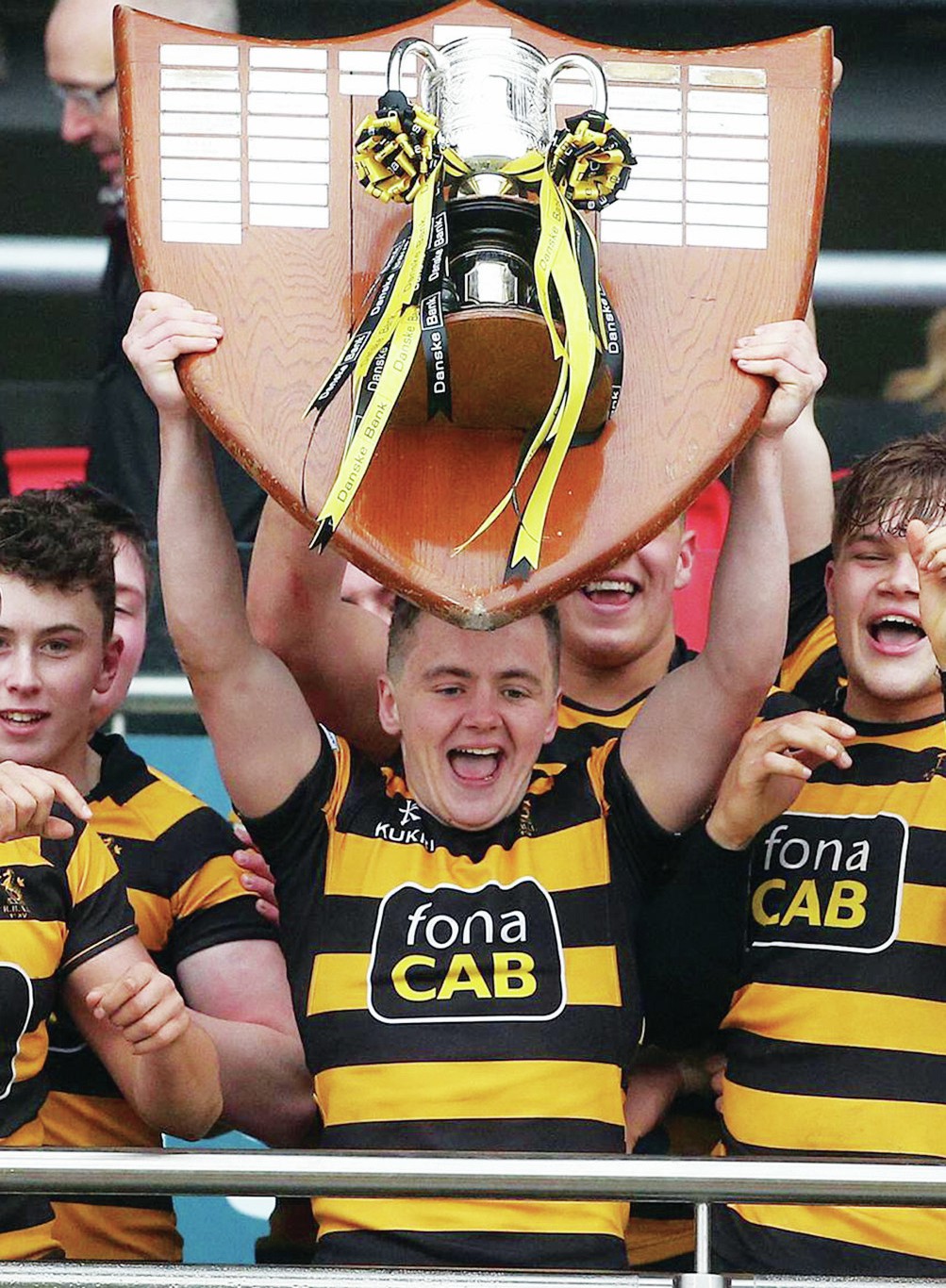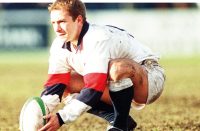Brendan Gallagher continues his series looking at rugby’s great schools

ANY discussion on the best rugby schools in the UK and Ireland must certainly include a close look at the claims of the Royal Belfast Academical Institute whose many successes have ranged through the centuries and continue apace.
Starting in 1875, when they could lay claim to seven members of the Ireland team, RBAI have spawned 84 Ireland internationals with one of those – Hugh Ferris – also winning a Springbok cap after he emigrated to South Africa in 1903. And of those 84, 13 went on to become British and Irish Lions.
Closer to home they have always been a powerhouse school in the Ulster Schools Cup which has become more than just a rugby institution in the province since its inception in 1876 with the competition final every March 17 always playing to packed houses at Ravenhill and now the Kingspan.
RBAI took a little time to make their mark and didn’t win their first title until 1888 but they have been making up for lost time ever since with 32 outright wins, four shared titles and 21 losing appearances as finalists. Only their great rivals, Methodist College Belfast, have more titles with 36.
Unsurprisingly they also boast a fine record in the Medallion (U15) competition with 35 wins and three shared titles in 51 appearances in the final. Another little statistic worth noting is that despite being situated in the heart of Belfast, RBAI never lost a day’s school or rugby throughout the Troubles in the 1970s and 1980s.
There have been some glorious periods of dominance in the senior competition with seven straight titles between 1943-48 while RBAI were also losing finalists in 1949 and 1950 before winning again in 1951. Another, briefer, golden period came more recently with a hard earned hattrick of wins between 2015-17.
Among the graduates of that era were livewire Ulster wing Michael Lowry – operating mainly at fly-half in those days – and very promising centre Jamie Hume, below, who was ever-present in all three Cup-winning sides and was recently voted Ulster’s young player of the season. Ulster prop Callum Reid – who starred in the Ireland side that took an U20s Grand Slam in 2019 – was another prominent member of that side while, most recently, Jude Postlewaite has been selected for the Ireland Sevens squad competing in the Olympic qualifying tournament in Monaco this weekend.

Among the early greats of RBAI rugby were Albert Stewart, a strapping centre who made the Ireland team just before World War 1 broke out, and the redoubtable William Tyrell a tigerish hooker during the same era and a British and Irish Lions tourist to South Africa in 1910.
Stewart played in the First XV for no fewer than four sea- sons as well as starring in the Cricket Xl while during the War he served in the Royal Irish Rifles and the Machine Gun Corps. He was killed in action in the Battle of Broodseinde during the Battle of Passchendaele. For his bravery during the Battle of the Somme he was recommended for a Victoria Cross by his senior officer but was turned down although he was posthumously awarded the DSO in 1918.
Tyrell, later Sir William Tyrell KBE DSO and bar MC, was another with a highly distinguished record – he was also mentioned in despatches on six occasions and awarded the Belgian Croix de Guerre during his time with the Royal Army Medical Corp. After the hostilities he transferred to the RAF where he rose to Air Vice Marshall. On the 1910 tour Tyrell was joined by two other Instonians, as old boys of the school are termed – Alexander Foster, another strapping centre and fly-half Arthur Mclinton who was to earn an MC serving with the 10th (South Belfast) Battalion, Royal Irish Rifles.
RBAI have a proud tradition of producing Ireland and Lions centres with Harry McKibben forcing his way onto the 1938 Lions tour and into the Test side after just one Ireland appearance. McKibben was part of an RBAI rugby dynasty. His younger brother Des was also capped for Ireland and, like Harry, became president of the IRFU, the only instance of brothers filling that office while two of Harry’s sons, Harry junior and Alistair, went on to emulate the achieve- ment of their father by being capped for Ireland at senior level. A third son, Roger, was an Irish trialist before injury brought a premature end to his career while his grandson Roger Wilson –a star of the 1998 and 2000 Ulster Schools Cup-winning sides – also enjoyed a distinguished career with Ulster and Northampton and was capped by Ireland.


RBAI’s British and Irish Lions
1903: IG Davidson; 1904: RW Edwards and CD Patterson; 1910: AR Foster, AN McLinton, W Tyrell; 1938: R Alexander, H McKibben, S Walker; 1955: RH Thompson; 1959: D Hewitt; 1966: R Lamont; 1980: C Patterson; 1983: D Irwin
Then there was Dave Hewitt, still spoken of in hushed terms by any who saw him blaze a trail at centre early in his career with Ireland and the Lions. Hewitt was starring for the 1959 Lions in New Zealand less than a full year out of schools rugby and also performed well in adversity on the 1962 Lions trip to South Africa.
Just to round off the roll of honour at centre we have David Irwin who won 25 caps for Ireland – helping them to the 1982 Triple Crown – and three Lions caps in New Zealand in 1983. He is the current medical director for Ulster Rugby.
RBAI are rightly proud of their many connections with the British and Irish Lions, not least producing captains for two of the great historical tours either side of World War 2. Sammy Walker was a singular character, both as a player and individual. A member of the 1930 RBAI that ended a long run of success for Belfast Methodist in the Ulster Schools Cup, he started life as a prop and that’s where he won ten of his first 11 caps for Ireland before 1939 with one appearance at hooker against New Zealand in 1938.
At the start of that 1938 season the Ireland selectors decided once and for all he was a hooker only to switch him to No.8 for the last two games of the campaign. The final match against Wales was his first as Ireland captain and soon afterwards he was appointed Lions captain, as one of the designated second rows.
Where else! Walker was a fine player and an automatic pick for the three Tests for the Lions who for the last time in their history played in blue jerseys. With his Belfast wit and humour he also proved an outstanding skipper of an excep- tionally hard tour.
When visiting Rhodesia the tour party, in the absence of hotel rooms, spent seven of their 11 nights in that Province sleeping on their train.
Walker, who had RBAI luminaries Harry McKibbin and Bob Alexander alongside him on tour, also had to contend with two of the legendary roustabouts of Lions history – future SAS legend Blair Mayne and Welsh tough man Bunner Travers who required more than a little handling. All this Walker took in his stride while playing in 20 of the 24 games on tour. The Lions lost the first two Tests but produced one of the best performances in their history when they scored 18 second-half points to win the third Test 21-16 at Newlands.
The Lions first tour to South Africa after the War came in 1955 and was led by Robin Thompson, again a lock, who had twice appeared in Ulster Schools Cupwinning teams at RBAI. Thompson was an exceptional athlete, not big by the standards of Test rugby, and something of a surprise selection as skipper, and at 25 was the youngest ever until the selection of Sam Warburton in 2013.
He was not one of the stellar talents on the tour like Tony O’Reilly, Cliff Morgan, Jeff Butterfield, Dickie Jeeps and others but he was an extremely mobile lock suited to the hard grounds and played in three of the four Tests on a memorable tour.
His reputation suffered the following year when he suddenly upped sticks and turned professional with Widnes, very unusual in Irish circles and also the first and only Lions skipper to make such a move. He was roundly condemned and ironcially his League career was virtually stillborn with Thompson incurring a career-ending knee injury a few months later.























